Are you doing enough to protect your business from shoplifting?
Retailer store owners need to implement tips and tricks for shoplifting prevention, especially given that this prolific crime costs retailers nearly $48.9 billion in 2016. According to the National Retail Federation (NRF), external shoplifting accounts for 36.5% of retail inventory shrinkage. Protecting inventory should be a priority for all retailers because their merchandise is the key investment and source of revenue. There’s nothing more disheartening that realizing that your store has been targeted by shoplifters. Given that The National Association for Shoplifting Prevention advises that approximately one in eleven people in America are shoplifters, you need to implement all the tricks and tips that you can to stop your store being targeted or, at the very least, reduce the incidence of people stealing your stock.
26 shoplifting prevention tips and tricks to protect your retail store
Most retail stores will experience shoplifting at one time or another. However, small retail store owners who aren’t in a financial position to fund advanced security measures are more vulnerable. The good news is that, irrespective of your budget, you can implement techniques to reduce the incidence of shoplifting.
Here are 26 tips and tricks to prevent shoplifting in your retail store:
1. Create a shoplifting prevention strategy
If your retail store is new, you’ll need to create a loss prevention strategy. For existing retailers who already have a shoplifting prevention plan in place, it’s important to make regular updates to your strategy to account for new developments in loss prevention. Your shoplifting prevention plan should include deterrence techniques as well as the procedure if you catch someone stealing from your retail store. Here are some questions to ask yourself to determine how you’ll handle a shoplifter who targets your retail store:
Will you involve the police?
Will you try to deal with the situation in-house?
Is there a price threshold where you’ll take different action, for example, you’ll call the police if the stolen goods cost over $100.
2. Beware of peak shoplifting times
Most shoplifters strike when the store is at its busiest. According to the Center for Problem-Oriented Policing, incidents of shoplifting increase between Wednesday and Saturday. Seasonal shoplifting matches high-demand shopping periods. Shoplifters are more likely to strike before Christmas, Easter, and summertime.
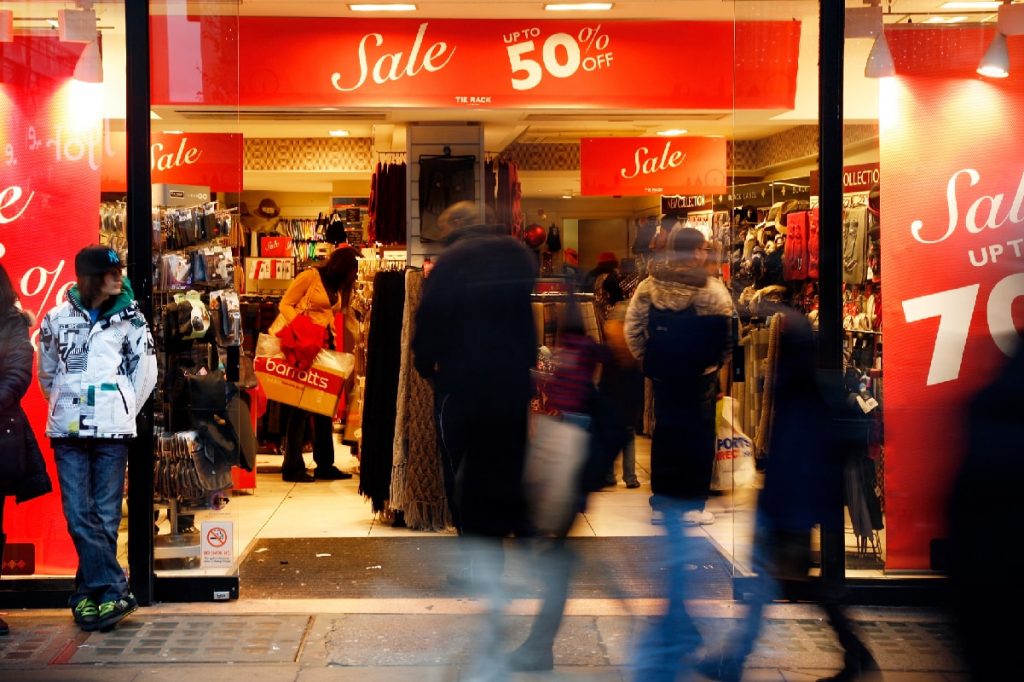
3. Avoid profiling customers
A University of Florida study found that many stereotypes of retail shoplifters are untrue. The point is that you should avoid making presumptions about your customer’s criminality. The study found that men stole more than women and middle-aged men who were gainfully employed shoplifted the most. Shoplifters come in all shapes and sizes. All your customers should be treated the same (unless they’ve given you genuine cause for suspicion).
4. Look out for familiar shoplifting methods
Although profiling is discouraged, it’s wise to identify common methods shoplifters use. Shoplifters rarely work alone. The shoplifter is normally accompanied by one or more accomplices to distract your employees. Shoplifters have other ways of stealing from you other than hiding merchandise. They can also switch price tags or attempt to make fraudulent returns. Shoplifters will often use items like strollers, umbrellas, and handbags to hide stolen goods.
5. Identify common suspicious behavior
There are behavioral patterns to watch out for when deciding whether someone is likely to shoplift from your store. Train your staff to keep an eye on customers exhibiting the following behavior:
Picking up random items.
Watching the sales associates.
Taking several items into the dressing room, but only coming out with one item.
6. Add electronic article surveillance
Electronic article surveillance is better known as security tags, which is attached to clothes. This shoplifting prevention tip will incur a cost to your business, but you should consider the savings you’re likely to make. A Cambridge University experiment found that “electronic tagging caused a lasting decrease in shoplifting.” If you find it won’t be financially viable to tag all the items in your store, consider including the cost of adding electronic tags to your high-value stock to your business budget.
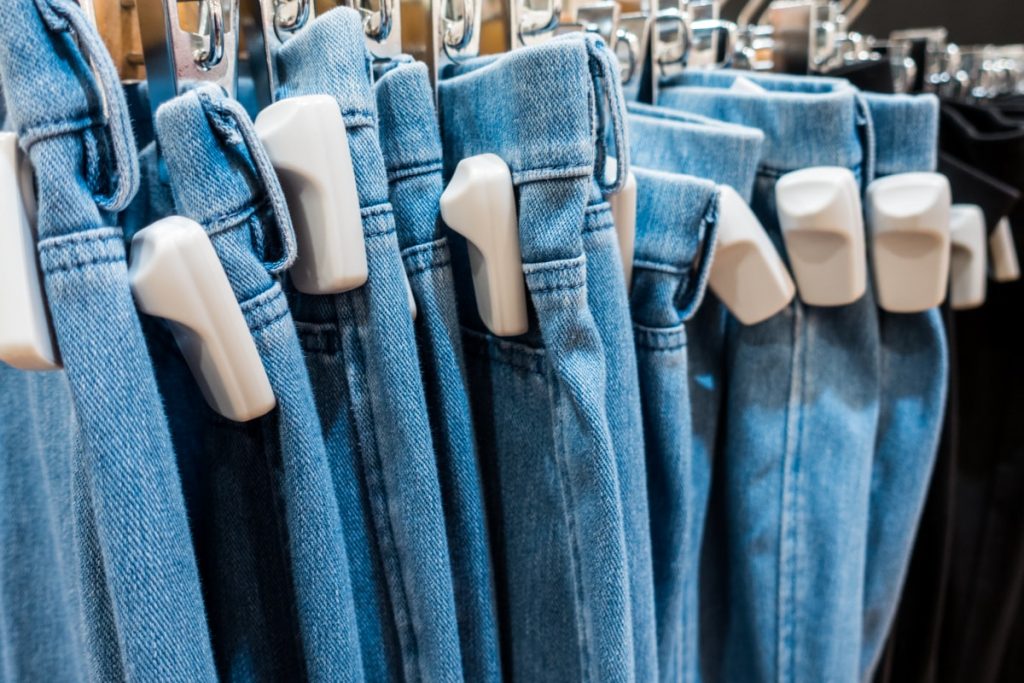
7. Fit security cameras
Installing security cameras in your retail store serves a dual purpose. Firstly, security cameras have been shown to reduce the rate of robberies by over 50% and you’re also able to keep an eye on your store (whether you’re present or not). Security cameras offer shoplifting preventative benefits and increase the chances of a prosecution if someone does steal from your store.
8. Adhere to a strict refund and returns policy
A common tactic of shoplifters is to steal your merchandise and try to return it for cash. Your return and refund policy should be clear about the circumstances in which customers can get cash for returns. If your policy states that under no circumstances will customers receive a refund without a valid receipt, stick to your procedure. Making exceptions to your return and refund policies will be seen as a green light to shoplifters to continue targeting your shore. Your store will be regarded as somewhere that shoplifters can get away with committing theft twice with the same item.
9. Maintain an organized store
Consider using visual merchandising not only to increase sales, but also to deter theft. When your store is organized, you can easily spot if items are missing. Most shoplifters find it easier to operate within an environment with the least chance of getting caught. An unorganized and messy store gives thieves more of an opportunity to make off with your product without anyone noticing until it’s too late. Due to the fact that shoplifting is generally not premeditated (73% of adults and 72% of juveniles don’t intend to steal in advance), your store’s layout and design can either encourage or discourage opportunist thieves.
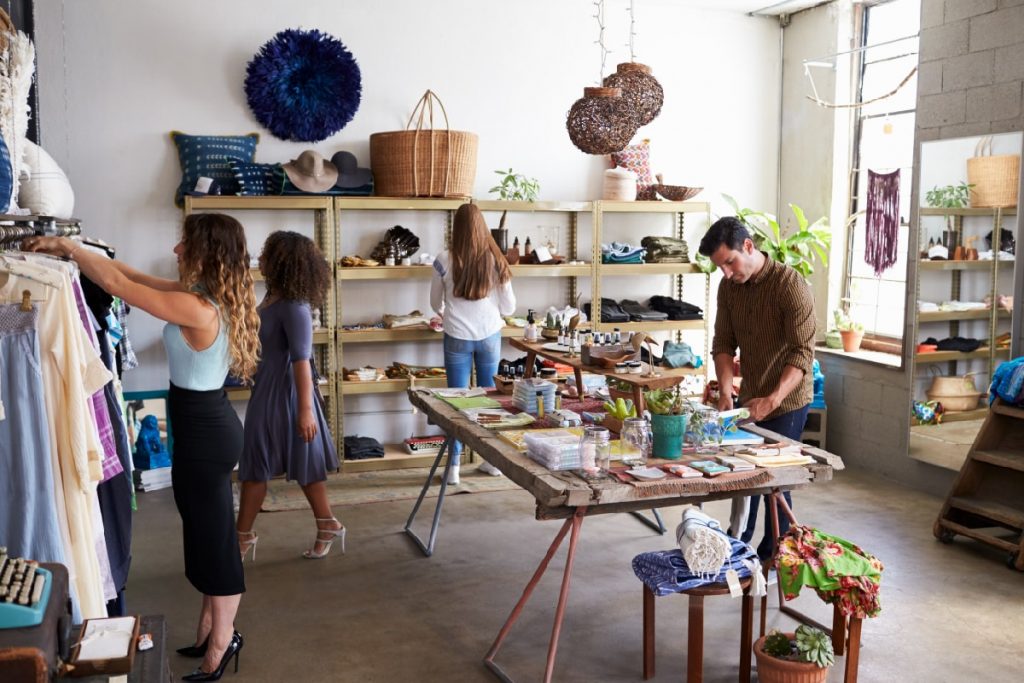
10. Shorten your displays
It’s advisable to design your store to provide you and your employees with maximum visibility. Although long aisles are common in most stores, they make it difficult to keep an eye on what’s happening. Using shorter displays gives you better visibility of your merchandise and what your customers are doing. The aim is to reduce blind spots. Tall displays provide obstructions to your view, which is ideal for shoplifters.
11. Use an alert for your store entrance
This shoplifting prevention tip is particularly suited to small businesses. Shoplifters don’t want you to be alerted to their presence. A simple way of knowing when people enter your store is to install a doorbell or buzzer that rings every time someone comes in. Alerts at your store’s entrance also help you to monitor who’s leaving the store. This is useful as it could draw your attention to someone who has been in your store for an unusually long time.
12. Station your cash register near the exit
A cash register near the exit of your store shows shoplifters that there will be someone around if they try to make off with your merchandise. When shoplifting, the aim is to get in and out as quickly as possible, without being spotted. Stationing employees at a cash register near the exit increases the risk of shoplifters getting caught leaving with stolen goods. Hopefully, this increased risk of getting caught will stop a shoplifter attempting to steal from you.
13. Watch your registers
Although cash register theft is more common with employee theft, shoplifters will steal cash if the opportunity arises. Grabbing cash from the register and running off is a quick-win for the shoplifter, so it’s important to have someone stationed at your cash registers at all times.
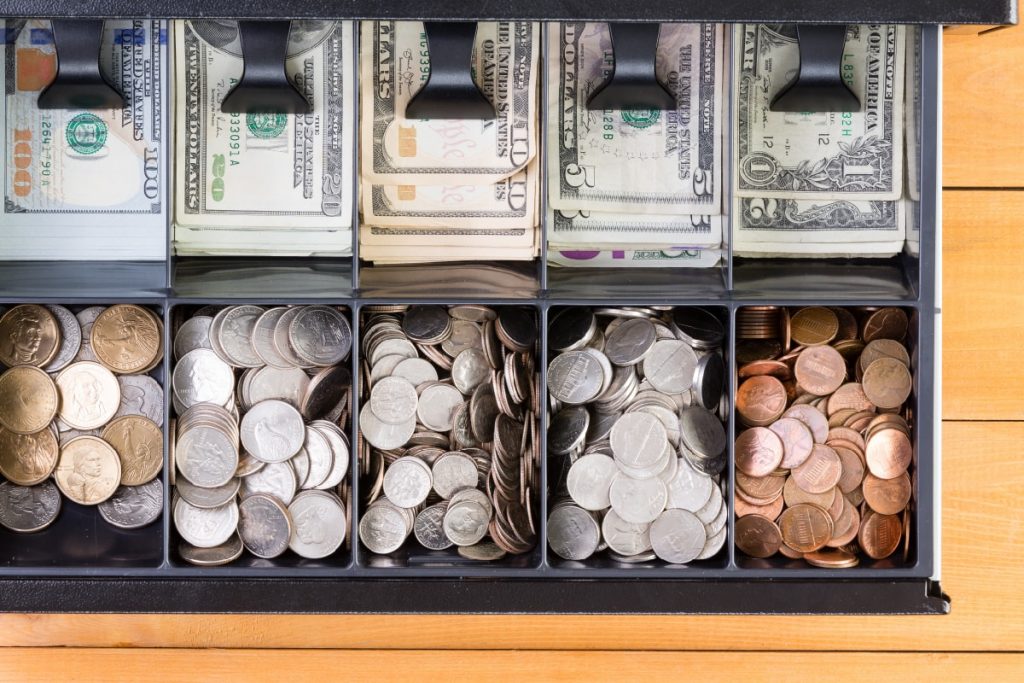
14. Keep an eye on the dressing room area
Dressing rooms are another area in your store where staff should be stationed at all times. It’s tempting to leave dressing rooms unattended during quiet periods. However, with no staff monitoring this area, thieves could sneak in and steal your merchandise. When there’s a lull in customers trying on clothes, encourage your staff to remain in the vicinity of the dressing room, so that no one can enter without the number of items being checked.
15. Apply customer service techniques
Providing effective customer service should double up as a sales and loss prevention technique. Train your staff to give customers as much attention as possible, so that no one feels invisible enough to steal your merchandise. The following tactics will benefit your regular customers and deter the ones with dishonorable intentions:
Welcome customers when they enter your store.
Update employees on shoplifting prevention tips and tricks.
Train staff on your inventory, so that they are aware of prices and will recognize if a price has been switched.
16. Prioritize customer relationship-building
Just because a customer visits your shop often doesn’t mean that they aren’t capable of stealing from you. Getting to know your customer on a first name basis and having general chit-chat may help to discourage shoplifters. The more customers you befriend, the more likely the honest ones will look out for your store and report any suspicious behavior.
17. Schedule your team
Create team schedules to ensure that you have full coverage of your store during busy times. Hiring seasonal staff to cover holiday and peak seasons is a useful way to prevent shoplifting. As noted above, there’s a spike in shoplifting before the holiday season starts, so bring more people on board and schedule them to do the most appropriate tasks to boost sales and keep your inventory safe.
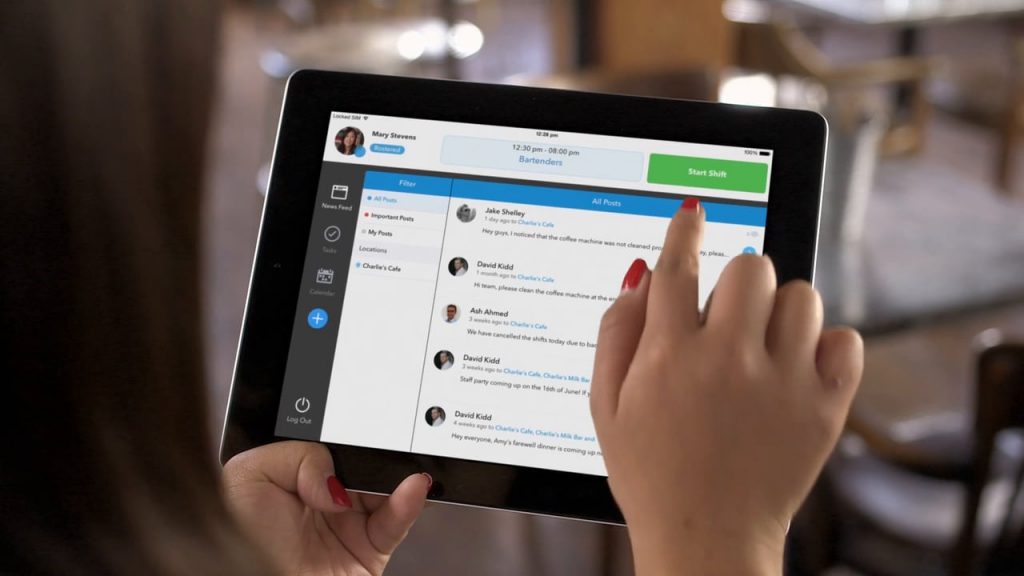
18. Deliver shoplifting prevention training
Share your shoplifting policy with your team during your training sessions. Educate them on the process to follow if they suspect someone of stealing your merchandise. Your training should include how to deal with different scenarios around shoplifting, including when a customer who has been accused becomes rude. Inform your staff about how appearing interested in their work and providing great customer service can discourage shoplifters from stealing your items.
19. Secure at-risk merchandise
Small, high-value items are more prone to being targeted by shoplifters. If you stock merchandise that is likely to attract the attention of shoplifters, consider taking extra preventative measures to secure them. You can place these items in a locked display cabinet. Alternatively, you could secure items like phones, cameras, and laptops to a cord to allow customers to handle them securely.
20. Prominently display shoplifting signs
A study by the Loss Prevention Research Council on the deterrent effect of surveillance signage found that “over 50% of shoplifters indicated they would either go to another store or not steal anything if those signs were present in an area where they were trying to steal.” Displaying shoplifting prevention signs in prominent areas in your store will alert potential shoplifters that you’re serious about preventing and detecting this crime. Your signs should include the shoplifting prevention method and the maximum shoplifting charge that can be imposed.
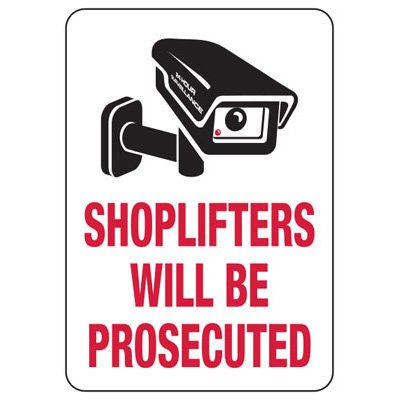
21. Include mirrors in your store design
Mirrors can help to get rid of blind spots to enable you to monitor what’s happening in different areas of your store. A common type of mirror for theft deterrence is a rounded security mirror that’s usually placed in the corner of the store. Mirrors will reflect areas of the store that could be hiding places for shoplifters.
22. Put yourself in a shoplifter’s shoes
Take a walk around your store and place yourself in the role of a shoplifter. Think about how thieves want to steal the items that can easily be hidden. The merchandise doesn’t necessarily have to be of high value. As noted previously, most shoplifting is opportunistic. Therefore, placing a cheap (but easy to steal) item in a blind spot will make it hard for a thief to resist. Change your merchandise around to keep shoplifters guessing. A Cambridge University study found that displaying items in less accessible (but visible) places decreased shoplifting incidents. These findings show that, when trying to prevent theft, rearranging merchandise often to keep shoplifters guessing must be coupled with vigilant staff.
23. Apply a bag-check policy
Place a ban on customers entering the dressing room with bags and backpacks. Even with a system to check the number of items going into the dressing room, determined shoplifters can hide additional products, so they won’t be counted. Customers should use the secure lockers provided to check their bags, otherwise they won’t be able to use your dressing room. This minor inconvenience won’t deter genuine shoppers, but shoplifters might leave your store because your back-check policy thwarted their plans.
24. Fully utilize your point of sale (POS) system
Make the most of your POS system by using the features to monitor what comes in and leaves your store. Match the number of merchandise sold to your revenue and investigate further if the numbers don’t reconcile. Keeping on top of your inventories’ movement will help you to spot and deal with negative patterns before they get out of hand. Your POS will steer you and alert you to shrinkage to start inquiries about the source of the theft.
25. Carry out a physical count on your inventory
To be certain that your merchandise isn’t being stolen, supplement POS reports with physical counts of your inventory. Once you’re familiar with the steps to take to conduct a physical inventory count, the process will become easier. The results of physically counting your inventory will help you to decide how you should visually merchandise your store to prevent shrinkage.

26. Get the police involved
According to the findings of The National Association for Shoplifting Prevention survey:
33% of juveniles and 57% of adults stated that it was difficult to stop shoplifting even though they have been caught.
Drug addicts have described shoplifting and drugs as equally addictive.
Given the addictive nature of shoplifting, you should do everything it takes to deter thieves from targeting your store. It could be tempting to let shoplifters off for what you consider to be a minor infraction – for example, stealing an item worth $5. However, this approach could cost your business in the long run. You need to determine the message you want to send to the shoplifter. Involving law enforcement whenever possible will spread the word that your store is no easy target. Partner up with your local law enforcement office to get advice on the best way to deal with shoplifters. Making the decision to call the police when you’ve caught someone shoplifting can be tough, but you’ll need to decide what’s best for your business.
Best practices to prevent shoplifting
Just as shoplifters get more imaginative in finding ways to steal from your business, you should always be on the lookout for shoplifting prevention tips and tricks to stay one step ahead. The tips and tricks above can be implemented by big and small business with a range of budgets. There’s no excuse for leaving your business vulnerable to shoplifting with the range of options available to safeguard your merchandise.
What does your business do to prevent theft? Let us know in the comments below.
Interested in retail employee scheduling tools? Stay updated and informed by subscribing to our blog.
